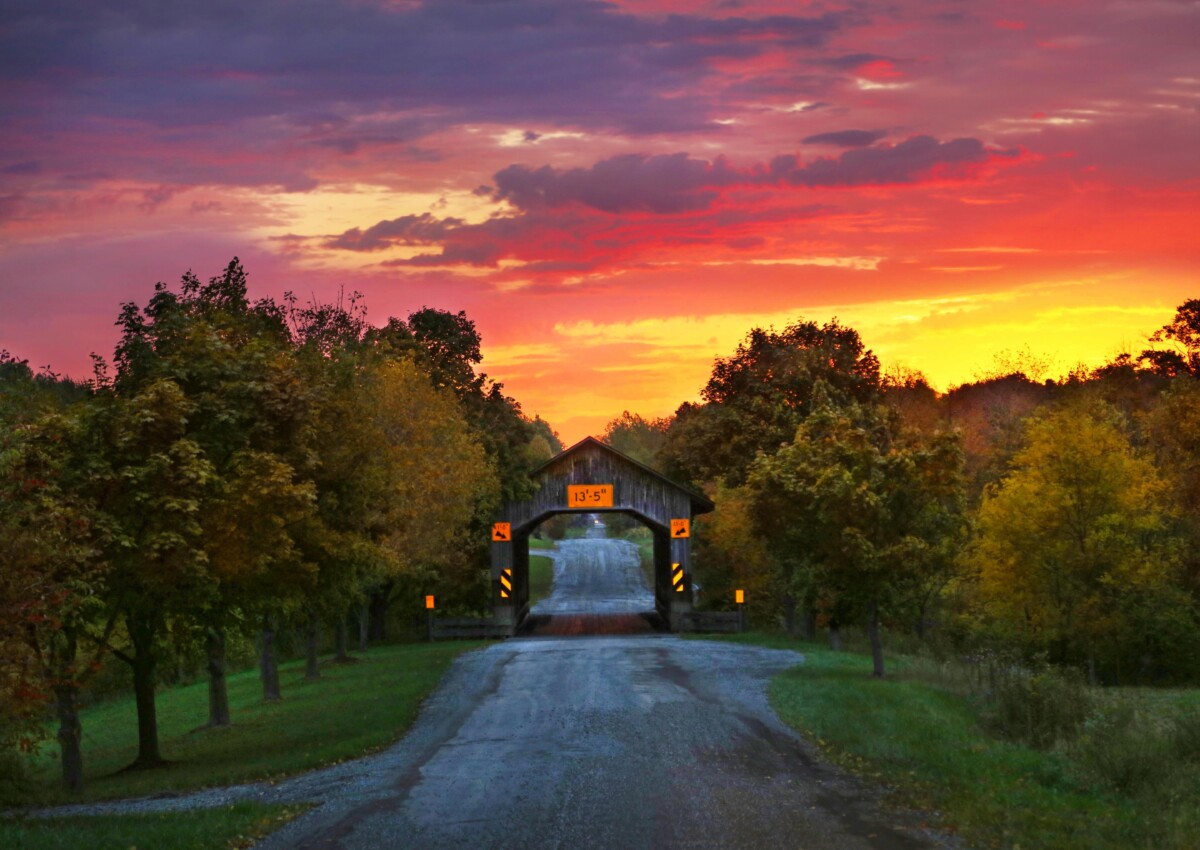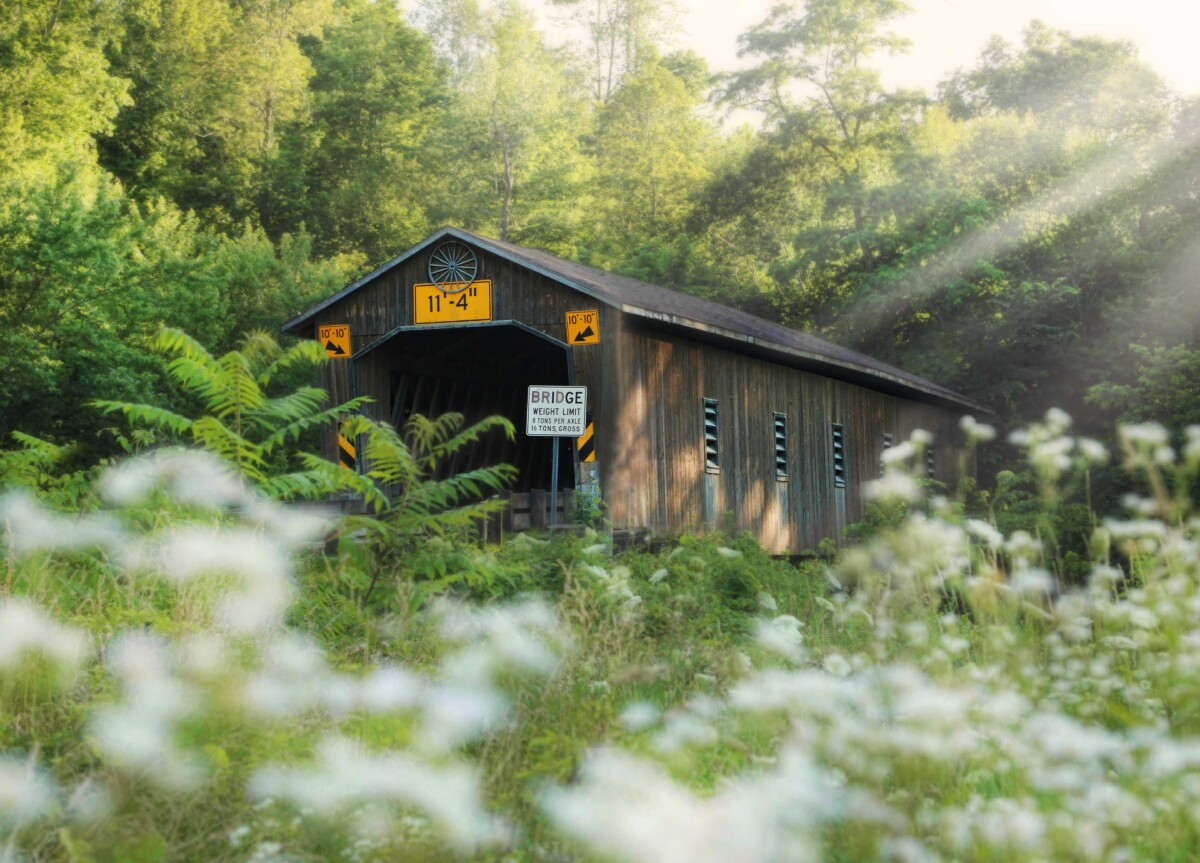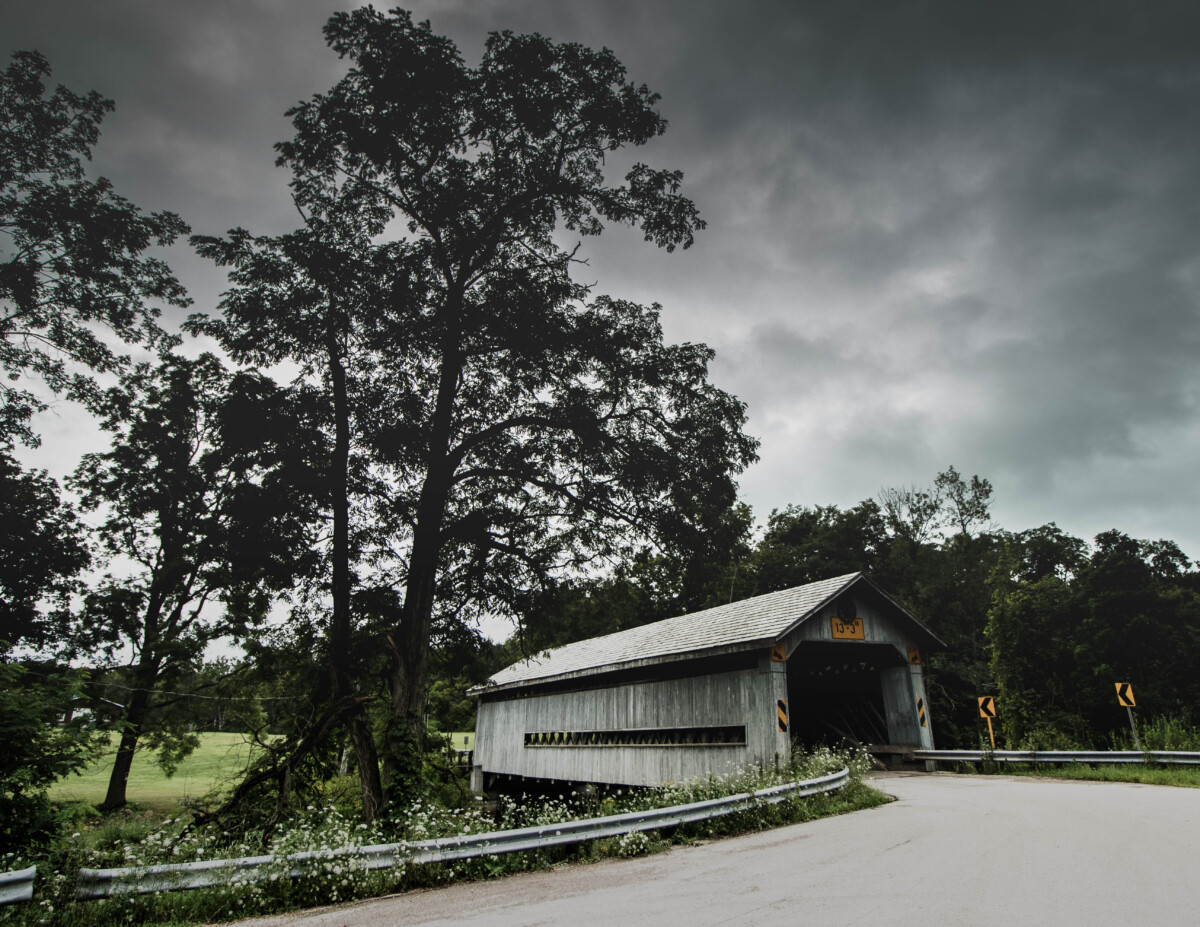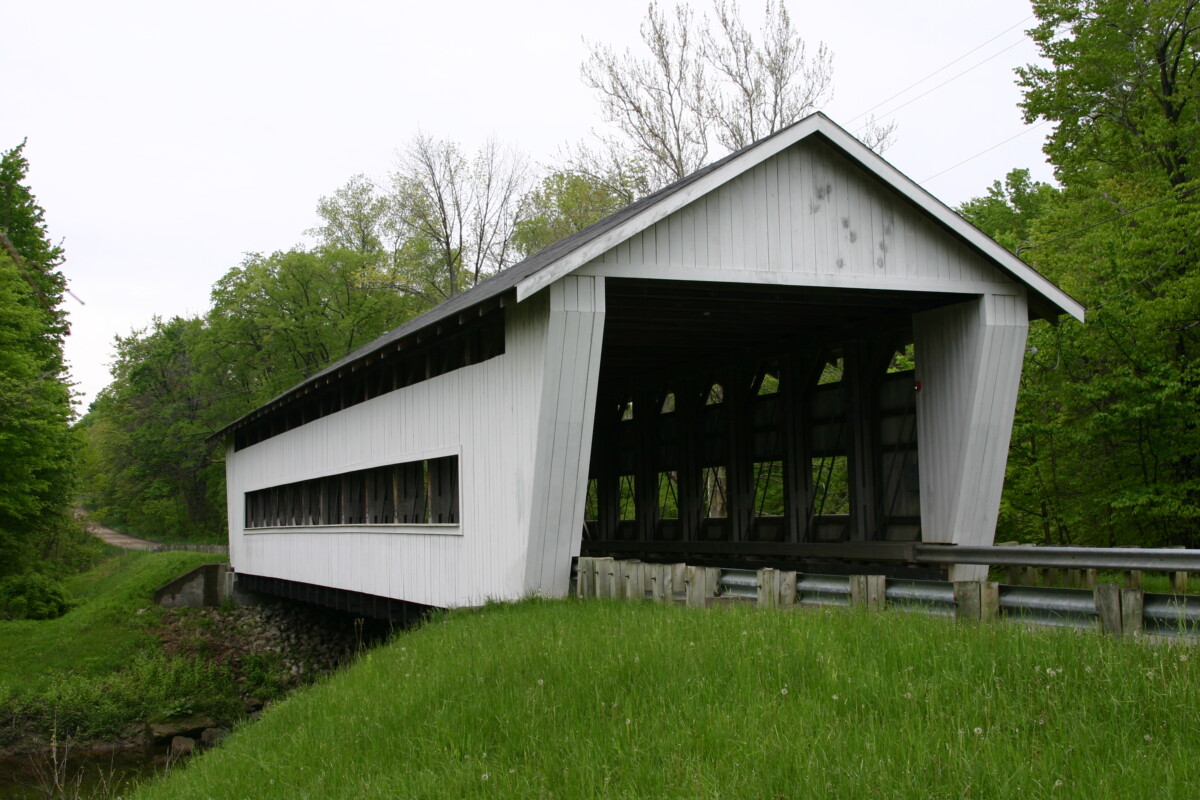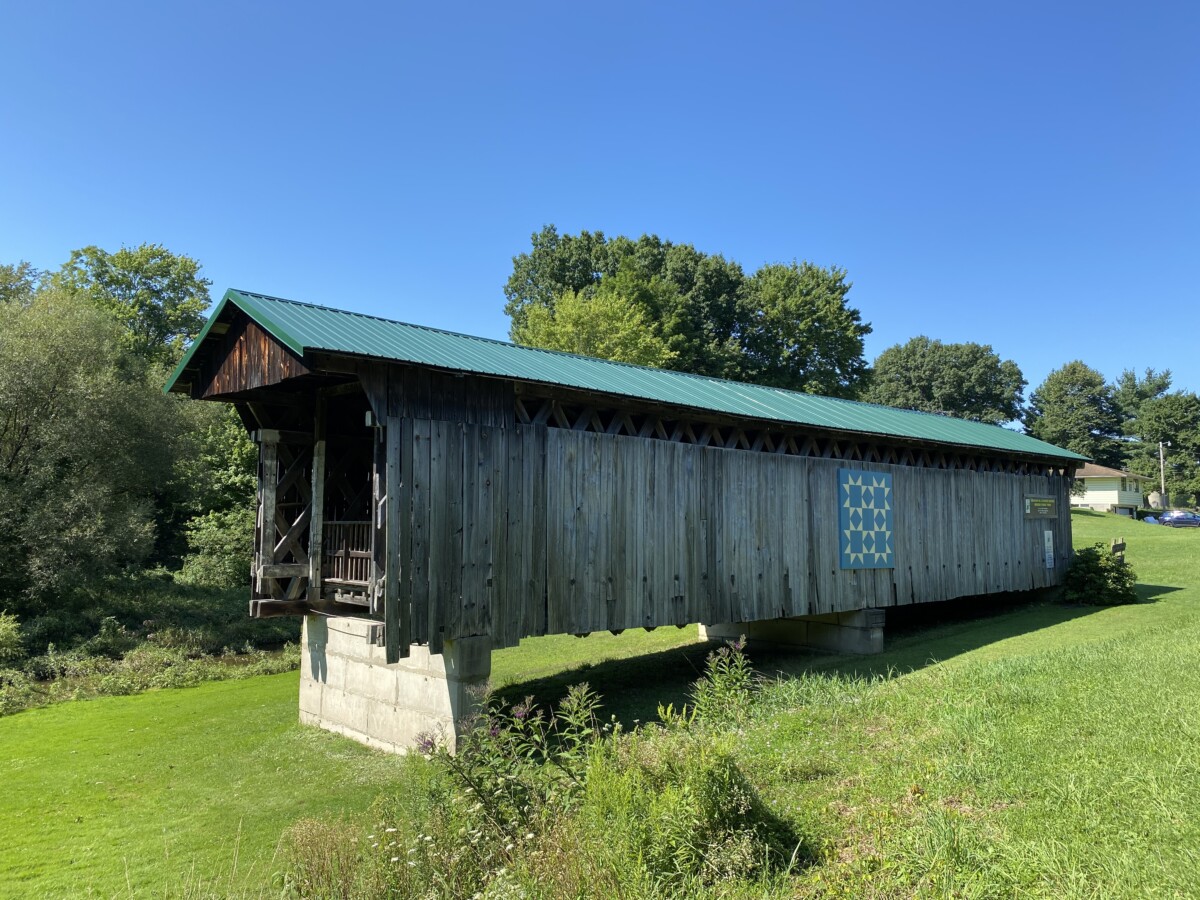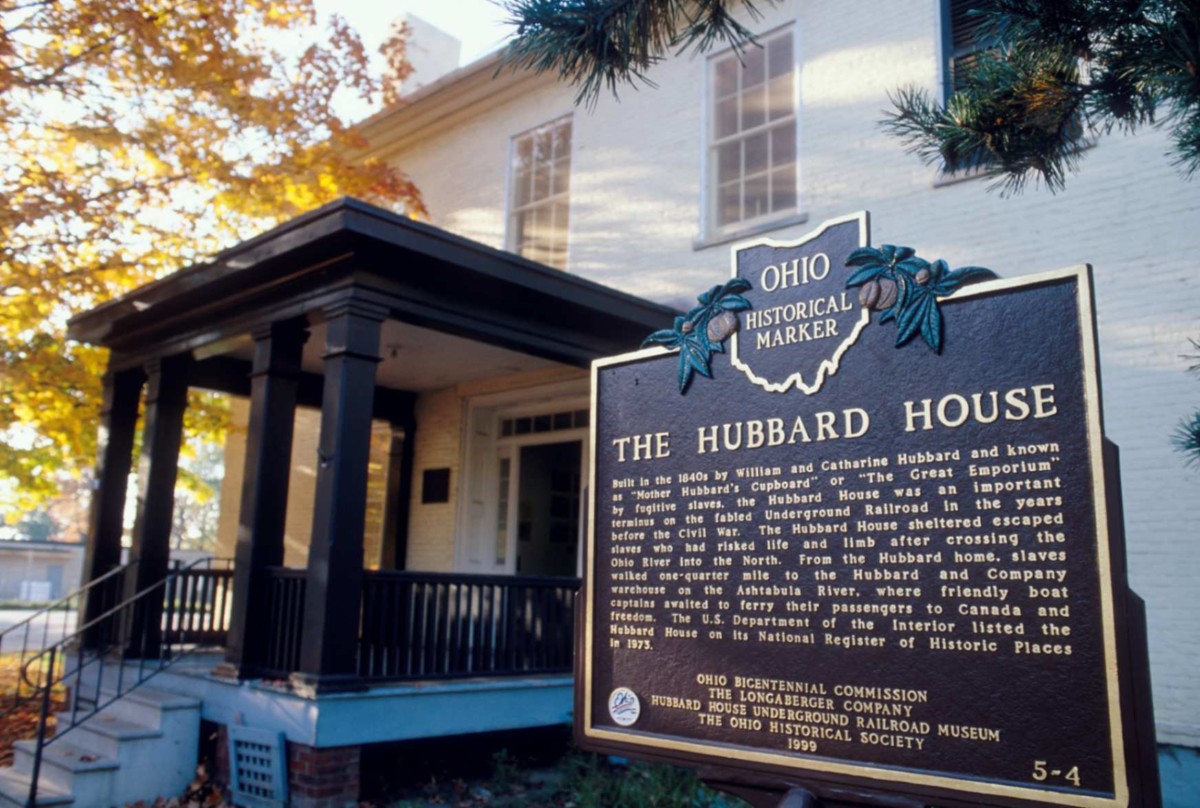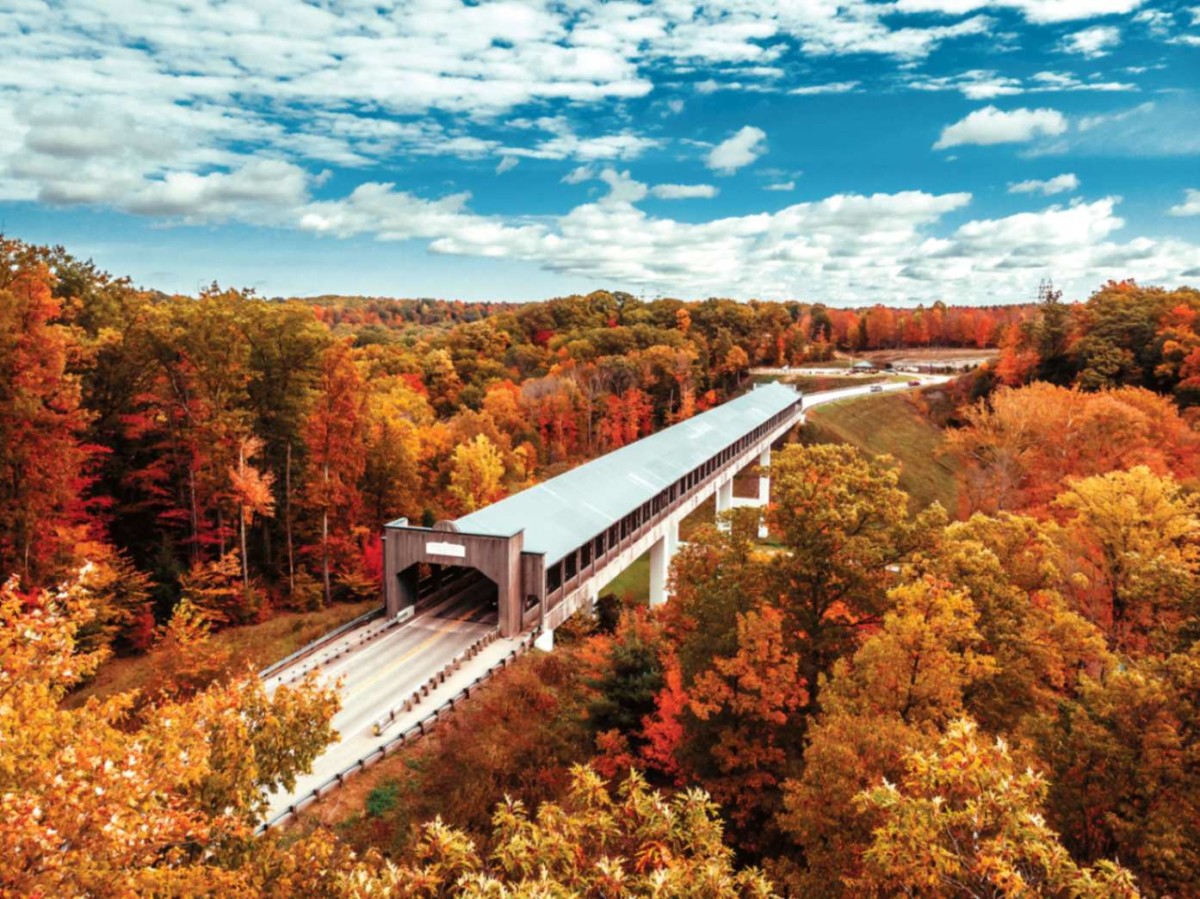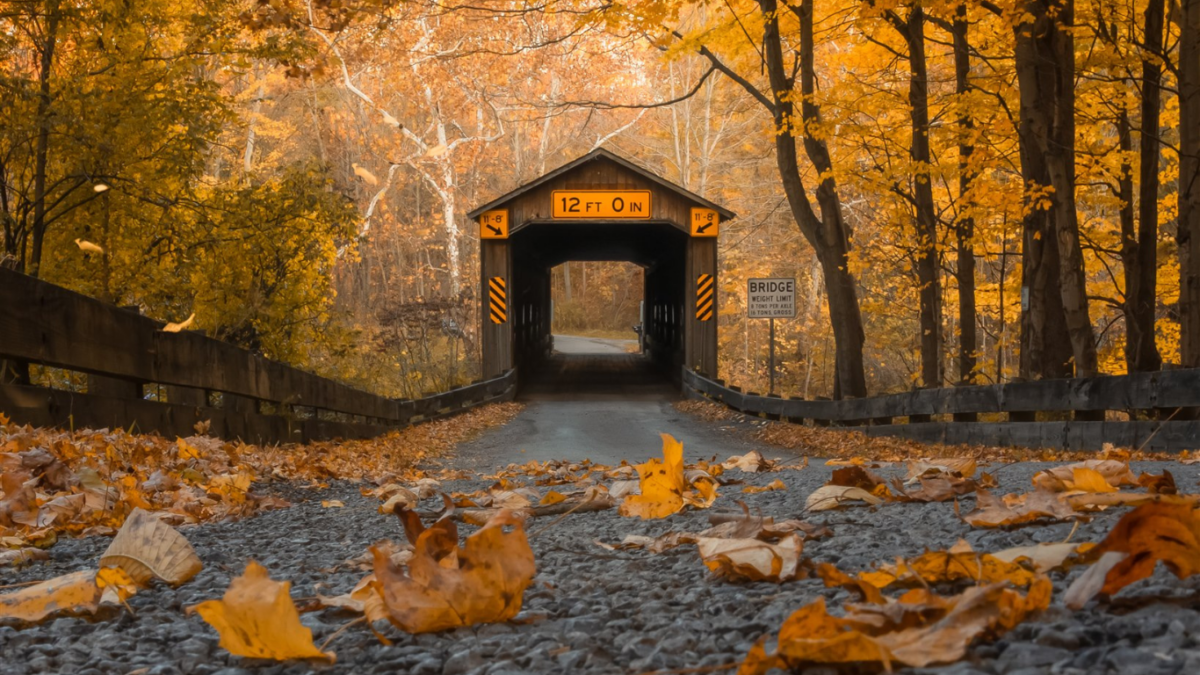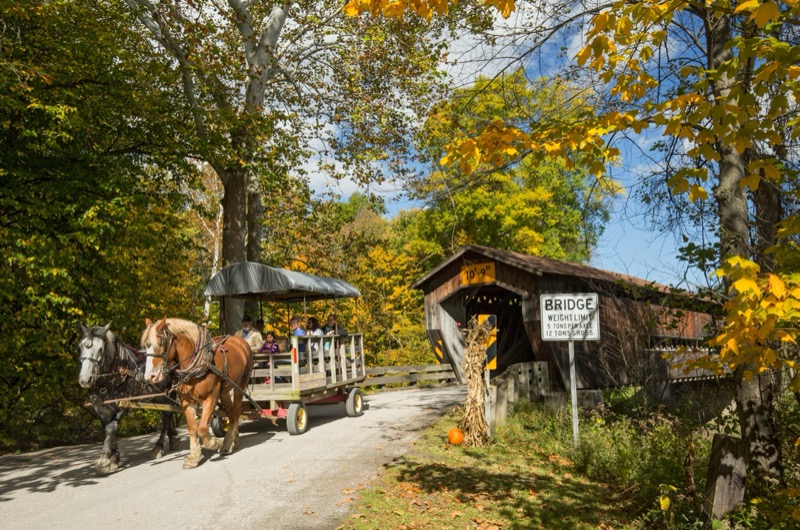
Covered Bridges
As you pass through one of Ohio’s historic covered bridges, the past and present collide. Ashtabula County, in Ohio’s northeast corner, is considered the covered bridge capital of the state and is home to 19 of these unique structures.
Some look upon these engineering feats and appreciate the craftsmanship and ingenuity of the builders. Others are in awe of the simple beauty of the historic structure as part of the landscape: magical and colorful crossings set against the area’s rolling hills and vineyards. Covered bridges offer a one-of-a-kind look at a bygone era.
The earliest documented covered bridge structures remaining in the area date back to 1867 (Mechanicsville and Windsor Mills) and 1868 (Root, Middle, and Harpersfield), but not all are over a century old. Ashtabula County boasts the construction of a new bridge as recently as 2016: Riverview pedestrian bridge, which is located under Smolen-Gulf.
The longest covered bridge in the United States is the Smolen-Gulf bridge at a length of 613 feet. Built in 2008, it has a life expectancy of 100 years. Also found in northeast Ohio is America’s shortest drive-through bridge: Liberty Street. Of Ashtabula’s 19 bridges, 17 are still operational, allowing vehicle traffic through year-round.


